An ancient marvel in the serene landscape of eastern Extremadura, Spain, has recently captured the world’s attention. The Dolmen of Guadalperal, also known as the Spanish Stonehenge, is a megalithic monument constructed over 7,000 years ago. It is older than the Egyptian pyramids and is one of Europe’s most enigmatic archaeological sites. Nestled in the town of Peraleda de la Mata, in the region of Campo Arañuelo, the Dolmen of Guadalperal offers a fascinating glimpse into the prehistoric past of the Iberian Peninsula.

The Dolmen of Guadalperal consists of approximately 150 granite stones, known as orthostats, some of which stand over two meters tall (around six feet). These stones are arranged in a circular pattern, much like the famous Stonehenge in England, which has earned the site its nickname, the Spanish Stonehenge. However, while Stonehenge dates back to around 3000 BC, the Dolmen of Guadalperal predates it by at least two millennia, making it a significant artifact of ancient human civilization.
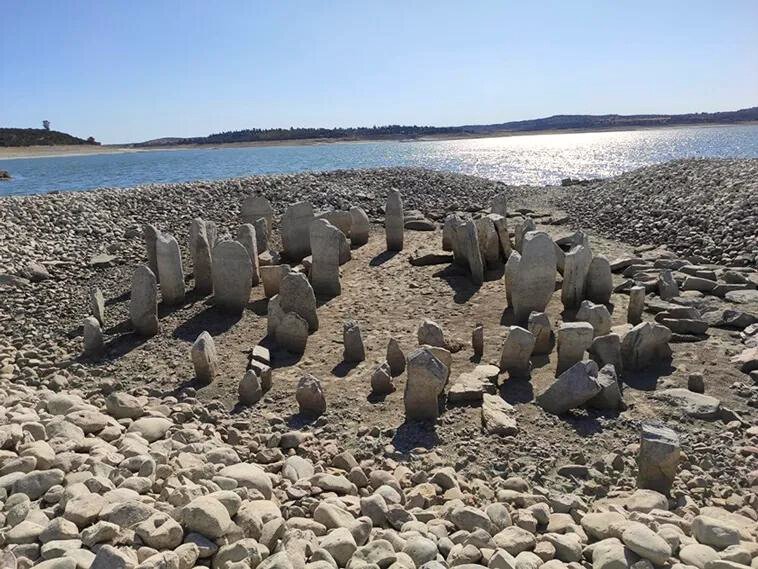
Archaeologists believe this structure was built by a prehistoric community living there during the Neolithic period. The exact purpose of the Dolmen of Guadalperal remains a topic of debate among scholars. Still, it is widely thought to have served as a burial site or a ceremonial structure. The arrangement of the stones suggests that the site may have been used for rituals related to death and the afterlife, possibly functioning as a passage grave where the deceased was laid to rest.
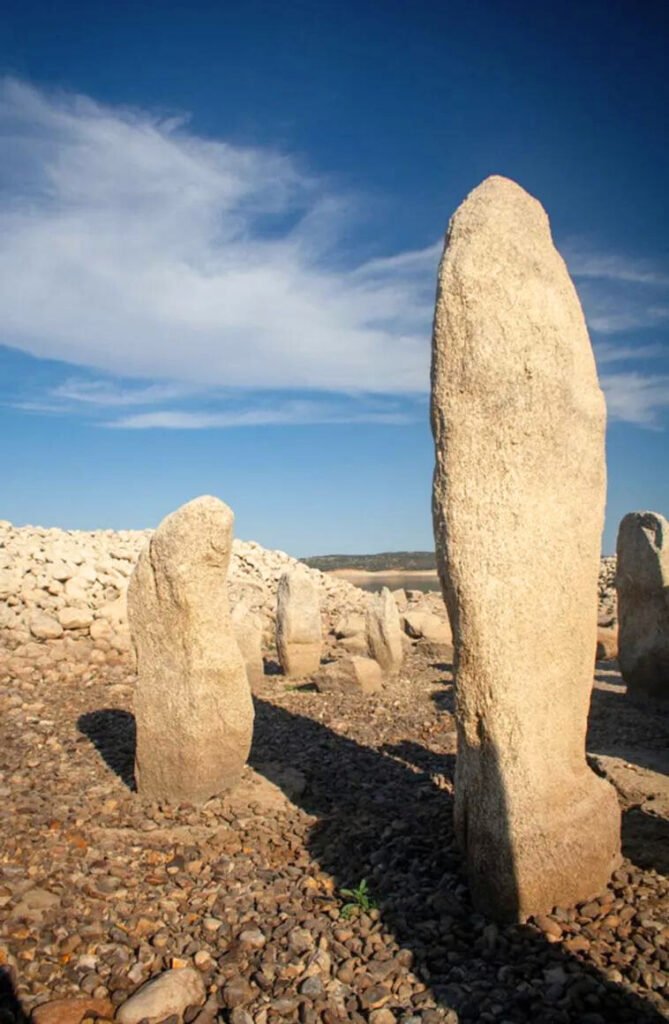
One of the most intriguing aspects of the Dolmen of Guadalperal is its alignment. Researchers have speculated that the monument was aligned with the summer solstice, similar to other megalithic structures across Europe. This indicates that the builders had a sophisticated understanding of astronomy and used the sun’s position to guide their construction. Some stones at the site feature carvings, including a menhir large, huge, upright stone engraved with a curved line. This line represents a snake, a symbol of fertility and regeneration in many ancient cultures, or a map of the nearby Tagus River, suggesting a connection between the monument and the surrounding landscape.
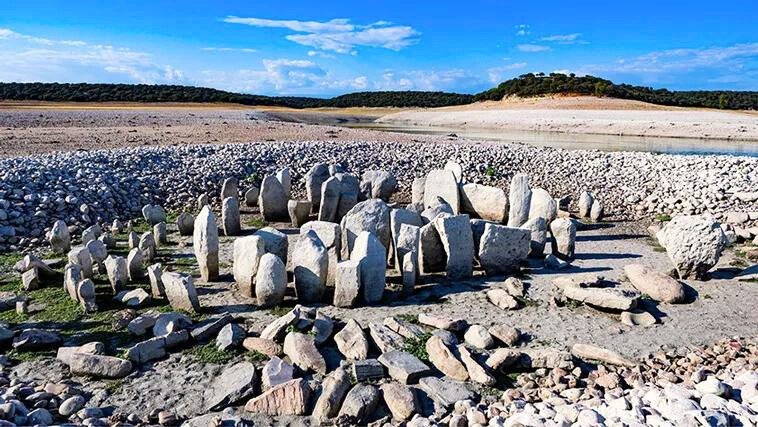
Unlike Stonehenge, located on a vast plain, the Dolmen of Guadalperal is uniquely situated on the banks of the Valdecañas reservoir. This location has significantly impacted the preservation and visibility of the site. In the 1960s, the construction of the Valdecañas reservoir led to the dolmen’s underwater submersion, where it remained hidden for several decades. The monument’s stones were submerged beneath the reservoir’s waters, shielded from the elements but also largely forgotten.
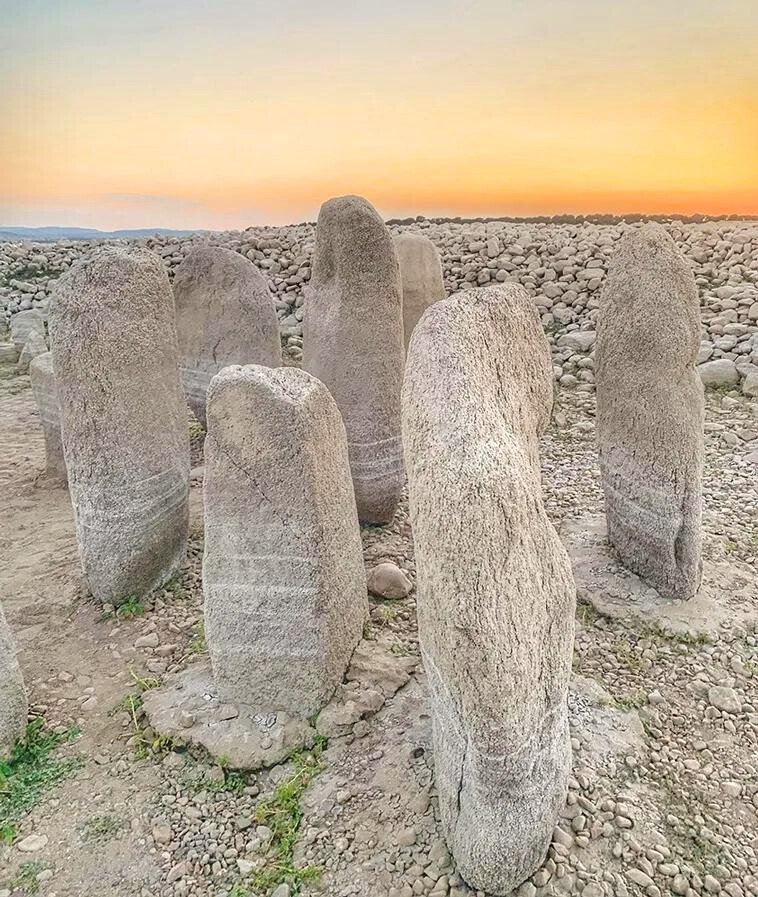
In July 2019, the Dolmen of Guadalperal was fully seen for the first time in 50 years. A severe drought in Spain caused the water levels in the Valdecañas reservoir to recede significantly, revealing the ancient site again. A NASA satellite photograph captured the Dolmen’s first comprehensive views, sparking renewed interest in the site and its history. The monument’s sudden re-emergence has given archaeologists and historians a unique chance to study the site in greater depth and uncover its importance within the broader context of European prehistory.
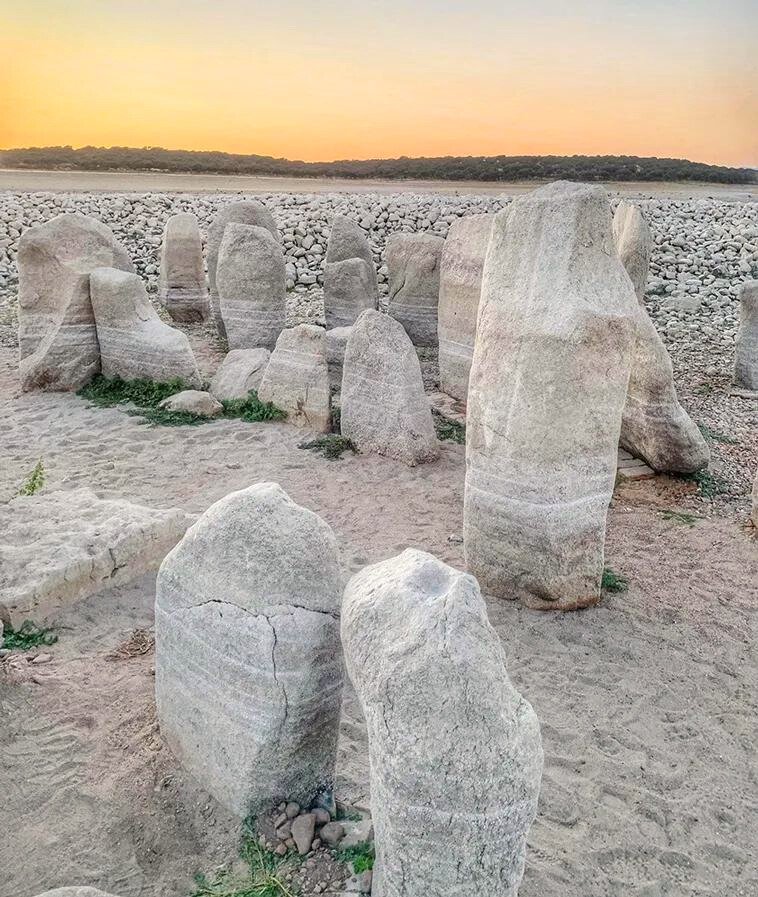
The reappearance of the Dolmen of Guadalperal has also raised questions about the site’s future. Given its periodic submersion and exposure due to fluctuating water levels, there is a growing concern about the monument’s long-term preservation. Some experts have called for measures to protect the dolmen from further damage, including potential relocation or the construction of barriers to prevent water erosion.

In conclusion, the Dolmen of Guadalperal, or the Spanish Stonehenge, is a testament to ancient human societies’ ingenuity and spiritual beliefs. Its alignment, carvings, and sheer age offer valuable insights into the world of our ancestors. As one of Europe’s oldest megalithic monuments, it is a striking testament to the deep connections between human culture, astronomy, and the natural world. The recent rediscovery of this ancient site has reignited interest among scholars and the public, offering a fascinating glimpse into a distant past that is gradually being revealed, stone by stone.
Also you can read an article about Scaligero Castle: The Enigmatic “Sinking Castle” of Lake Garda and more amazing articles in our website Bamboospanda.










